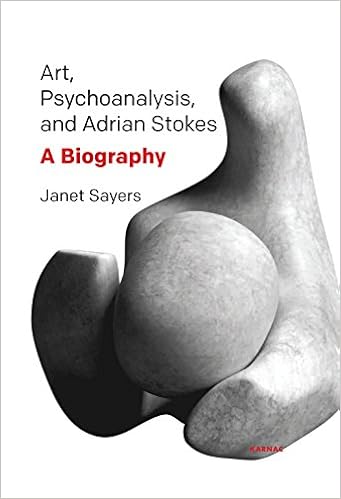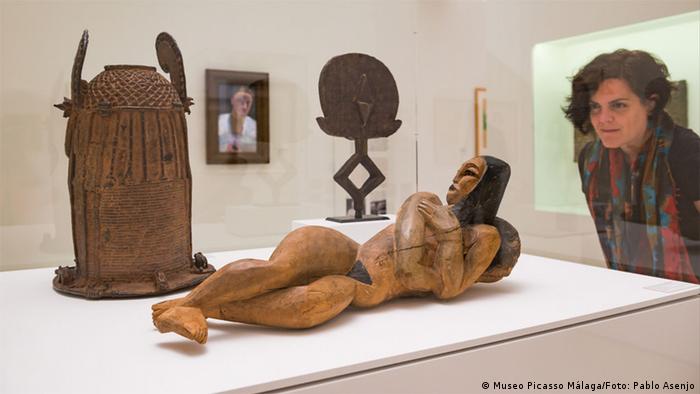 CULTURE DESK
CULTURE DESKOCTOBER 27, 2015
Noguchi in Suburbia Vs. Noguchi in NatureBY
ALEXANDRA LANGE
Isamu Noguchi’s “Strange Bird,” in bronze, installed at the Brooklyn Botanic Garden. CREDITPHOTOGRAPH BY LIZ LIGON. COURTESY BBG/THE NOGUCHI MUSEUM
The squat, mirror-glass office buildings by South Coast Plaza, in Costa Mesa, hard by the San Diego Freeway, look like a hundred other squat, mirror-glass office buildings scattered across greater Los Angeles. Most of the time, these buildings serve as a backdrop for nothing special, but Costa Mesa is different. There, the mirrors reflect Isamu Noguchi’s “
California Scenario,” a little-known
public plaza dotted with carefully placed trees, sculpture, mounds, and a meandering river. Noguchi
spent decades trying to make something similar for New York City, but nothing ever happened. That chronicle of frustration provides a backdrop to the installation of eighteen Noguchi sculptures at the Brooklyn Botanic Garden (through December 14th), in conjunction with the thirtieth anniversary of the Noguchi Museum in Queens. It was fascinating to see Noguchi first in the epitome of bland office suburbia, and then in the Indian-summer lushness of the Botanic Garden.
Noguchi’s “California Scenario” is an essay on the landscape of California in seven parts. “Water Source” is a thirty-foot-high triangular sluice, with water flowing into a curving stream that is sunken below the sandstone plaza. The stream leads all the way to a flattened granite pyramid symbolizing civilization, called “Water Use.” A circular mound, dotted with desert plants, stands for one part of the state, while a wedge-shaped hill, circled by redwoods, represents another. A knotty stone sculpture called “Spirit of the Lima Bean” refers to the original use of the land under the South Coast development, while the circular “Energy Fountain” creates a rush of whitewater over stacked granite blocks. I’m not really sure what “Land Use,” the ivy-covered hill placed in front of 3200 Park Center Drive is doing. It does screen the door of the building, further separating Noguchi’s space from that of business.
When the developer Henry Segerstrom first approached Noguchi about creating a garden, the artist turned him down, uninspired by the surroundings. But Segerstrom was persistent and flattering, and he understood that Noguchi wanted (paid) opportunities for “exploration and growth.” As the writer Hayden Herrera describes the design process in “Listening to Stone,” her 2015 biography of Noguchi, Segerstrom was ready to meet Noguchi’s terms, abandoning his idea of a green garden or freestanding sculpture and letting the artist take over. Noguchi presented the scenario to the client on
a twenty-by-twenty-inch board, placing the elements like chess pieces. Later, Noguchi would try to convince the officials at Joshua Tree to let him have five rocks from the national park for the garden. When they turned him down, Noguchi found what he needed in Yucca Valley and Arizona. (This
YouTube video shows footage of the installation.)
Encountering “California Scenario” behind a Peet’s Coffee is a perpetual surprise. The freeway is nearby, but a de Chirico-like wall that fronts the parking garage and encloses the other two sides of the plaza effectively removes it from notice. You ping-pong between Noguchi’s seven elements, looking at them up close, then far away. Then you might wonder if you’re allowed to dip your feet in the water. Each piece has its own texture, combining rough and smooth, stone and cacti and evergreens, as well as its own microclimate. It’s hot and bare by “Desert Land” but, on the bench atop “Forest Walk,” it feels ten degrees cooler. Even the garbage can is a Noguchi sculpture.
If Segerstrom had gotten the green garden he pictured, it would be brown now in the era of #droughtshaming. But Noguchi, in creating an homage to the different landscapes of California, hit upon the strategic use of plants, water, energy, and pavement necessary now and for future public plazas in the era of climate change. His use of resource-hogging grass is minimal, and yet there is still a small lawn on which to sit. Look in any direction and you see green mixed with the brown. Most of the plants are drought-tolerant, and the redwoods have deep roots. You can hear the fountain as soothing white noise even when it is not in view, and the meander of the river draws water through the space. Both were designed to recirculate water.
Brooklyn is not having a drought, but I had a déjà vu moment in the “Desert Pavilion”
at the Brooklyn Botanic Garden, where Noguchi’s “Root & Stem,” a slender upright of galvanized steel, is initially imperceptible among the slender cactus at the center of the glass room. The artificiality of the setting mimics the “Desert Land” in Costa Mesa, with the sculpture as both an echo and an interloper.
Dakin Hart, a senior curator at the Noguchi Museum, said that he tried to think like the artist when placing the fifteen sculptures in the garden. “The main goal was to install works in a way that makes them feel uncannily at home, like they belong there, have always been there,” he said. Many of the sculptures’ settings echo existing paths and lines in the garden: there’s a foliated tree at the end of the Ginkgo Allee and a bird totem in the Cherry Esplanade. A bronze circle, cast like miniature mountains and molded by Noguchi’s feet, fits in a circular node in the path through the meadow in the Native Flora Garden.
A number of these settings were too polite and predictable. Once freed from the museum, I wanted to see the sculpture in the relative wild, popping up in the midst of the meadow or interrupting a predictable route. While it was great to come upon a Noguchi unannounced, I wished a few were visually bigger, so that I could have spotted them without consulting a map. (“The Whole,” next to one of the wisteria pergolas, weighs eight thousand pounds, but doesn’t look that big in the context of the garden.) The last thing I wanted was for the sculptures to blend in with the other rocks, roots, and stems.
In the Japanese Hill-and-Pond Garden, for example, “Mountains Forming” sits like two silvery peaks above the pond. The concept of borrowed landscape, so central to Japanese gardens like this one (designed by Takeo Shiota a hundred years ago), was doubled by the addition of the Noguchi, providing another set of hills in the distance. The placement of “Magritte’s Stone,” another steel piece, on the stone steps leading from the formal Osborne Garden, also worked as a double joke. The “stone” is flat, though it had a rounded glow in the sunlight, and it looked as if it had dropped to earth to throw off old-fashioned symmetry. In both of these settings, the material and placement of the Noguchis created the friction that he desired, adding to the garden and making the visitor move closer, then back away, as at “California Scenario,” to see the sculptures from different angles.
Even if some additions were disappointing, the act of looking for them did transform my experience of the Botanic Garden, leading me down paths I’d never walked in a dozen earlier visits. It works, even if not necessarily as a showcase for art. “Noguchi or water fountain?” I wondered, half-joking, about a blocky concrete fountain that looked not unlike the Segerstrom garbage can. Ordinary stones and blasted stumps had to be considered as potential sculpture—as Noguchi did when he went rock hunting in the Yucca Valley.
If Noguchi sculptures seemed superfluous on the pond in the Hill-and-Pond Garden, that superfluity called attention to the carefully placed bridges, temples, and specimen trees already there. The Botanic Garden, similar to “California Scenario,” is a landscape chess match, in which the artist and curator must weigh when to deploy a phalanx of pawns (bushes) and when to place a show-stopping queen (tree). Noguchi’s pitch to Segerstrom was that he would be a sculptor of space, not just of material, and would make a place rather than just a piece of trophy art. In Brooklyn, among the native grasses of Long Island, I could hear the rumble of Flatbush Avenue, but it seemed very far away. The best urban gardens let you step off the grid, just for a moment, and find yourself somewhere else. Noguchi, like the designers of the Brooklyn Botanic Garden, understood that grid as an essential part of the scenario.










.jpg)



.jpg)


%20by%20Robert%20Indiana%2072dpi.jpg)




